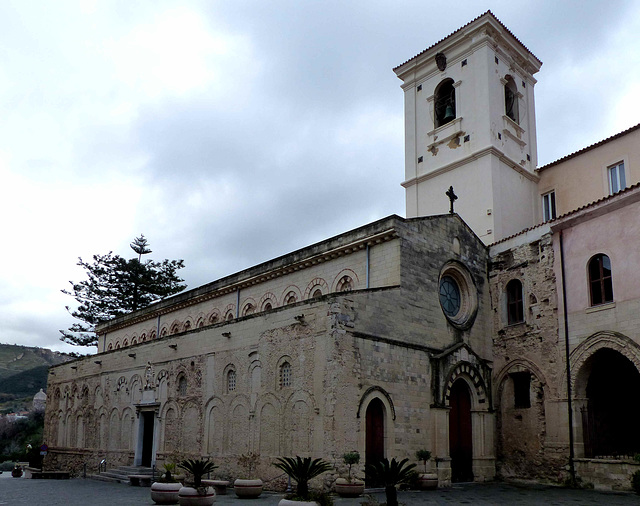Tropea - Concattedrale di Maria Santissima di Roma…
Tropea - Concattedrale di Maria Santissima di Roma…
Tropea - Concattedrale di Maria Santissima di Roma…
Tropea - Santa Maria dell’Isola
Tropea - Santa Maria dell’Isola
Tropea - Santa Maria dell’Isola / Stromboli
Cosenza - Bottega d'arte il Duomo
Cosenza - Cattedrale di Santa Maria Assunta
Cosenza - Cattedrale di Santa Maria Assunta
Cosenza - Cattedrale di Santa Maria Assunta
Cosenza - San Domenico
Cosenza - Calze Ingrosso
Paola
Diamante - Street Art
Diamante - Street Art
Diamante - Street Art
Diamante - Street Art
Diamante - Street Art
Diamante - Enjoy Box
Diamante - CBD Shop
Maratea - Chiesa dell'Annunziata
Maratea
Rivello
Tropea - Chiesa di Michelizia
Tropea
Tropea
Mileto - Parco Archeologico
Mileto - Santuario S. Maria della Cattolica
Mileto - Duomo Maria SS. Assunta e S. Nicola
Mileto - Duomo Maria SS. Assunta e S. Nicola
Messina - Sacrario di Cristo Re
Messina - Chiesa della Santissima Annunziata dei C…
Messina - Chiesa della Santissima Annunziata dei C…
Messina - Chiesa della Santissima Annunziata dei C…
Messina - Duomo
Messina - Duomo
Messina - Duomo
Messina - Duomo
Messina - Duomo
Messina - Duomo
Itala - Santi Pietro e Paolo
Itala - Santi Pietro e Paolo
Itala - Santi Pietro e Paolo
Itala - Santi Pietro e Paolo
Itala
Location
Lat, Lng:
You can copy the above to your favourite mapping app.
Address: unknown
You can copy the above to your favourite mapping app.
Address: unknown
See also...
Keywords
Authorizations, license
-
Visible by: Everyone -
All rights reserved
-
46 visits
Tropea - Concattedrale di Maria Santissima di Romania


A legend has it that the city was founded by Hercules when he returned from his work on the Pillars of Hercules.
The settlement has been the seat of a diocese since the 7th century. In 1094 a Latin clergyman succeeded the Greek bishops for the first time. Around 1000 Tropea developed into a prosperous city, favored by tax and administrative freedom.
In the 13th century, Tropea was rebuilt to its current state, on a rock overlooking the sea to protect it from Saracen incursions. Over the centuries, regular earthquakes caused severe damage on the city, causing the residents to rebuild the city on top of the ruins after each tremor.
In the 19th century, the city began to decline for a long time, which could only be reversed with the start of tourism. Today this is a seaside resort, and due to its location and the well-preserved old town, Tropea is one of the most popular holiday destinations in Calabria.
The Cathedral of Tropea is a former Episcopal church built by the Normans on the foundations of an older Byzantine church. Today the church is the concathedral of the Diocese of Mileto-Nicotera-Tropea.
It is dedicated to "Saint Mary of Romania" (Italian: Maria Ss. di Romania), a miraculous image of the Madonna that is said to have saved Tropea from the effects of a severe earthquake in 1638. It was also active during WW II, when of the 6 bombs that hit Tropea, none exploded.
However being severely damaged by an earthquake in 1905, the cathedral was thoroughly restored. The original appearance was reconstructed and the baroque elements were removed.
The settlement has been the seat of a diocese since the 7th century. In 1094 a Latin clergyman succeeded the Greek bishops for the first time. Around 1000 Tropea developed into a prosperous city, favored by tax and administrative freedom.
In the 13th century, Tropea was rebuilt to its current state, on a rock overlooking the sea to protect it from Saracen incursions. Over the centuries, regular earthquakes caused severe damage on the city, causing the residents to rebuild the city on top of the ruins after each tremor.
In the 19th century, the city began to decline for a long time, which could only be reversed with the start of tourism. Today this is a seaside resort, and due to its location and the well-preserved old town, Tropea is one of the most popular holiday destinations in Calabria.
The Cathedral of Tropea is a former Episcopal church built by the Normans on the foundations of an older Byzantine church. Today the church is the concathedral of the Diocese of Mileto-Nicotera-Tropea.
It is dedicated to "Saint Mary of Romania" (Italian: Maria Ss. di Romania), a miraculous image of the Madonna that is said to have saved Tropea from the effects of a severe earthquake in 1638. It was also active during WW II, when of the 6 bombs that hit Tropea, none exploded.
However being severely damaged by an earthquake in 1905, the cathedral was thoroughly restored. The original appearance was reconstructed and the baroque elements were removed.
- Keyboard shortcuts:
Jump to top
RSS feed- Latest comments - Subscribe to the comment feeds of this photo
- ipernity © 2007-2025
- Help & Contact
|
Club news
|
About ipernity
|
History |
ipernity Club & Prices |
Guide of good conduct
Donate | Group guidelines | Privacy policy | Terms of use | Statutes | In memoria -
Facebook
Twitter

Sign-in to write a comment.